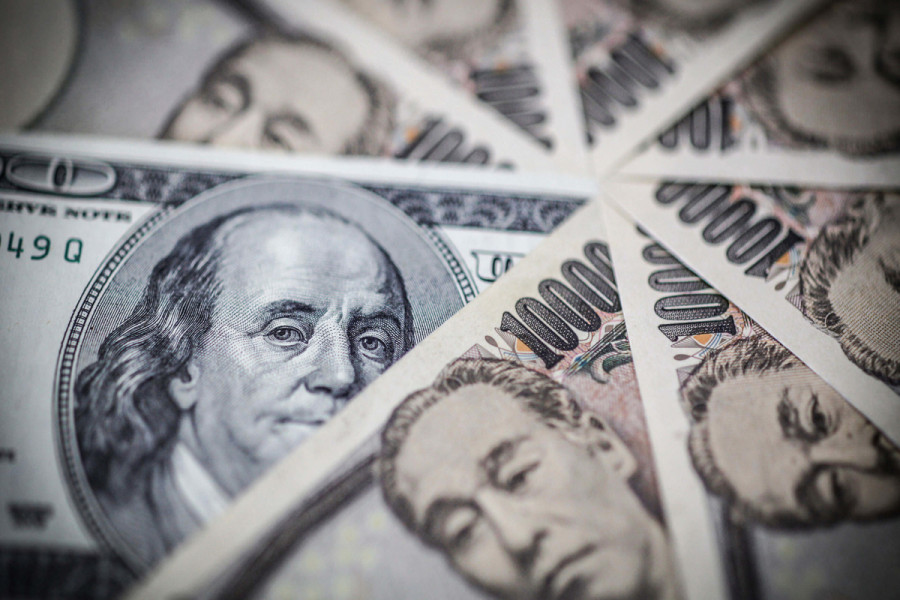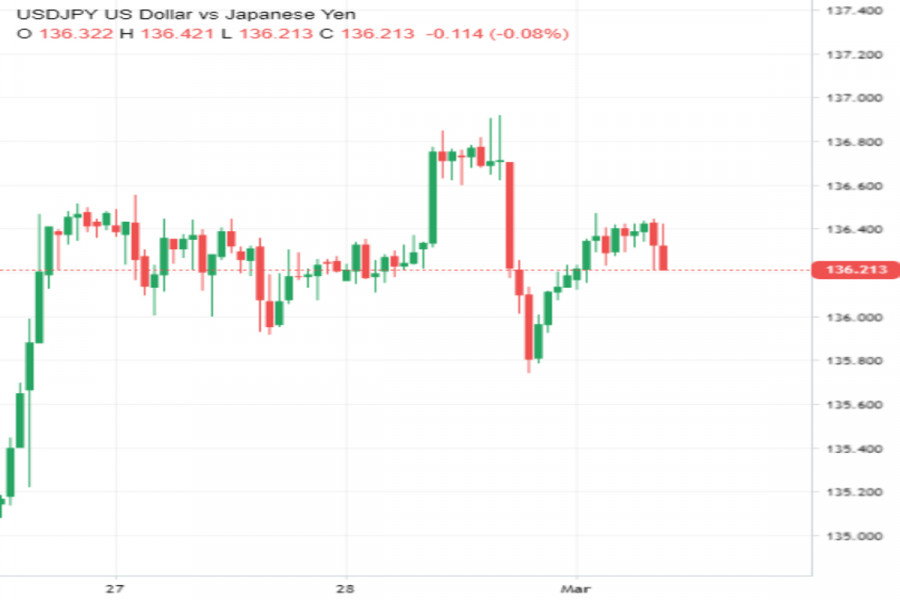

On Wednesday morning, the dollar-yen pair is persistently trying to rise after a 2-day downtrend. According to analysts, the way up will be quite bumpy, but eventually the greenback will hit a new peak. How high can it climb?
Yesterday, the USD/JPY looked like a roller coaster ride. At first the rate rose sharply and then it sharply went into a free fall.
Market fears over a further widening of the monetary gap between the US and Japan were the growth driver for the dollar in the first half of the day.
Given the fact that US inflation is still stable, the market now expects the Fed to continue raising interest rates over the next few months. Positive US macro data adds to traders' confidence.
As for Japan's monetary policy outlook, chances for a long-awaited pivot by the Bank of Japan are thawing by the day. Last Friday, Kazuo Ueda, the candidate for the BOJ governor, made it clear that he intends to continue the current dovish course.
This week, the rhetoric of Japanese officials remained in the same vein. The future BOJ governor refused to discuss possible ways for the central bank to exit the ultra-loose policy.
His potential deputies took a similar stance. Ryozo Himino said it was not yet time for a pivot, and supported maintaining an accommodative course in the country. Shinichi Uchida also dismissed the possibility of an immediate revision to the BOJ's current monetary strategy.
The yen felt a strong bout of weakness on Tuesday on dovish comments from policymakers, which contributed to the USD/JPY jump. The pair rose to 136.93, but it failed to stay at the 2-month high, much less develop an uptrend.

The dollar was hammered by optimistic economic data from China, which turned out to be higher than forecasts and significantly boosted demand for risky assets.
"The strong set of China PMIs breathed some life into the China reopening trade, and slightly cooled market fears about the global recession, which can be triggered by aggressive rate hikes from the largest central banks," said Christopher Wong, a currency strategist at OCBC.
In this background, the investment appeal of the dollar decreased. On Tuesday afternoon, the USD/JPY pair dropped 0.9% to 135.73.
Some experts attribute the dollar's peak on Tuesday to technical flows at the end of the month, believing that the greenback's rate fell as a result of profit taking.
The hawkish market sentiment allowed the dollar to appreciate by almost 3% in February against its major competitors, and against the yen, the USD climbed 5% last month.
As we see, the divergence of the monetary policy between the US and Japan remains the main catalyst for growth of the USD/JPY pair. Since this factor is not going anywhere in the near term, many analysts predict further strengthening of the pair.
The next important triggers for the USD/JPY asset should be the U.S. employment and inflation data that will be released in March.
If traders see signs of a tight labor market and solid price growth, it could significantly bolster their hawkish expectations for further Fed action, which would serve as rocket fuel for the dollar.
Dovish rhetoric from Japanese officials could also be a tailwind for the USD/JPY pair. If the market sees no movement in the hawkish direction at the BOJ meeting in March, which will be the last one for current BOJ Governor Haruhiko Kuroda, the yen will weaken.
Another risk now hanging over the JPY is a decline in exports in Japan. Despite falling commodity prices, the trade deficit in Japan continues to grow. The figure set a record in January, reaching 19.97 trillion yen ($155.33 billion).
According to Bloomberg analyst Robert Fullem, the future prospects for Japanese exports remain bleak as activity in some of the country's largest export sectors continues to struggle.
According to data released Tuesday, Japan's auto and semiconductor equipment production slowed significantly in January.
At this rate, Japan's trade deficit may become chronic, which in turn will weaken the yen even more.
At the moment, the Japanese currency has little chance to grow. The exchange rate of JPY may rise only if the BOJ sharply shifts and takes a hawkish stance.
Of course, such a scenario looks extremely utopian at this stage, but that doesn't mean the yen bulls will cast it aside. Most likely, speculations about a possible BOJ pivot will get stronger as Ueda is getting closer to officially taking office, which can limit the USD/JPY's growth.
Despite all obstacles, the major is still able to ride the wave of growth, analysts said UOB. According to the forecasts of the financial conglomerate, within the next few weeks the quote will be in an uptrend.
From the technical point of view the advantage remains on the side of bulls. Buyers are encouraged by rising MACD signals, as well as steady trading beyond the support line from two weeks ago.
The main risks for traders playing on the rise of the pair USD/JPY, are the obvious overbought RSI and the presence of the key moving averages.
The USD/JPY needs to move above the 137.00 level to continue the bullish momentum. This will open the way to the level of 140.00.
But on its way north, the asset may encounter some obstacles. The tough nuts for the bulls will be the high of December 20, 137.47, the high of December 16, 137.80 and the high of November 30, 139.89.